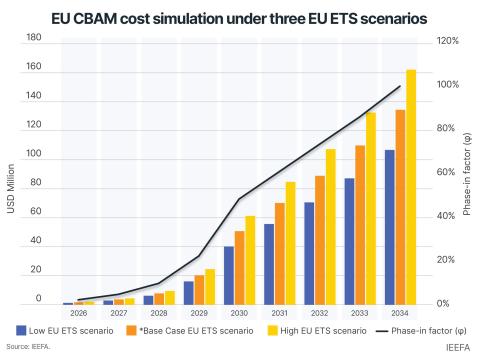Norway’s Sleipner and Snøhvit CCS: Industry models or cautionary tales?
Download Full Report
View Press Release

Key Findings
Sleipner and Snøhvit demonstrate carbon capture and storage is not without material ongoing risks that may ultimately negate some or all the benefits it seeks to create.
Every project site has unique geology, so field operators must expect the unexpected, make detailed plans, update the plans and prepare for contingencies.
Ensuring storage is securely maintained implies a high level of proactive regulatory oversight, activities for which governments may not be adequately equipped.
Sleipner and Snøhvit cast doubt on whether the world has the technical prowess, strength of regulatory oversight, and unwavering multi-decade commitment of capital and resources needed to keep carbon dioxide sequestered below the sea – as the Earth needs – permanently.
Executive Summary
The oil and gas industry, along with a host of high carbon-emitting companies and hopeful governments, are looking at offshore carbon capture and storage (CCS) as a panacea to reducing anthropogenic carbon dioxide (CO2) emissions. Leading CCS proponents consistently cite two projects in Norway as proof of the technology’s viability: Sleipner and Snøhvit. These offshore fields have been operating since 1996 and 2008 respectively. The facilities separate CO2 from their respective produced gas, then compress and pipe the CO2 and reinject it underground. Between Sleipner and Snøhvit, an average of 1.8 million metric tonnes per year of CO2 are disposed of in this manner, accumulating 22 million tonnes in storage so far.
Following from Sleipner’s and Snøhvit’s purported success, there are now nearly 200 proposed offshore CCS projects worldwide seeking to sequester hundreds of millions of tonnes of CO2 annually – potentially billions over their operating lives. These proposals represent hundreds of billions of dollars in capital investment and billions of dollars in ongoing operating costs. More importantly, they are said to be the key to making a material dent in the over 37 billion tonnes of CO2 emitted globally each year.
Can these two Norwegian projects be relied upon as fully successful models for global decarbonization?
Research conducted by the Institute for Energy Economics and Financial Analysis (IEEFA) has revealed that storing carbon dioxide underground is not an exact science. It may carry even more risk and uncertainty than drilling for oil or gas, given the very limited practical, long-term experience of permanently keeping CO2 in the ground.
Oil and gas exploration companies rely on their geophysical survey prowess and analytic capabilities in identifying and updating reserves. However, even in what are thought to be reserve-rich areas, drilling sometimes comes up with dry holes. This is because exploration is an inexact science. There can be no clairvoyance as to what lies below the ground, but rather indications. While exploration is increasingly based on data derived from the most advanced technologies, its outcomes necessarily remain estimates drawn from interpretations and interpolations of subsurface data.
The subsurface areas of Sleipner and Snøhvit are among the most studied geological fields in both oil and gas and CO2 storage globally. More seismic and other forms of subsurface study and monitoring of these two fields have been conducted than nearly any other place on the planet. Over 150 academic papers have been published. Their seismic datasets have been downloaded more than a thousand times.
Despite the studies, experience and passage of time, the security and stability of the two fields have proven difficult to predict. In 1999, three years into Sleipner’s storage operations, CO2 had already risen from its lower-level injection point to the top extent of the storage formation and into a previously unidentified shallow layer. Injected CO2 began to accumulate in this top layer in unexpectedly large quantities. Had this unknown layer not been fortunate enough to be geologically bounded, stored CO2 might have escaped.
At Snøhvit, problems surfaced merely 18 months into injection operations despite detailed pre-operational field assessment and engineering. The targeted storage site demonstrated acute signs of rejecting the CO2. A geological structure thought to have 18 years’ worth of CO2 storage capacity was indicating less than six months of further usage potential. This unexpected turn of events baffled scientists and engineers while at the same time jeopardizing the viability of more than US$7 billion of investment in field development and natural gas liquefaction infrastructure. Emergency remedial actions and permanent long-term alternatives needed to be, and were, identified on short notice and at great cost.
In the context of CCS projects and proposals worldwide, Sleipner and Snøhvit account for only a tiny fraction of the intended carbon capture capacity.
The hub proposals – from Malaysia to the North Sea to the Gulf of Mexico – are larger by factors of 10 or more, and potentially entail CO2 storage fields measuring in the thousands of square kilometers. Applying a similarly intense level of technical study, monitoring and resources as allocated to the CO2 storage operations of Sleipner and Snøhvit may prove to be a cost and resource challenge for larger, more complex CCS projects.
Yet unpredicted deviations in how Sleipner’s and Snøhvit’s injected CO2 was interacting with targeted strata underground, including unexpected behaviors that evolved years into operations, indicate that such monitoring is indeed required. What the Norwegian projects demonstrate is that each CCS project has unique geology; that geologic storage performance for each site can change over time; and that a high-quality monitoring and engineering response is a constant, ongoing requirement. Every proposed project needs to budget and equip itself for contingencies both during and long after operations have ceased.
Globally, regulation of CCS projects is both nascent and uneven. Australia, the European Union and Norway have perhaps the most advanced rules governing CO2 injections, but their efficacy of scope and level of detail remains untested. The common features are requirements for pre-implementation plans; collection and disclosure of operational data; and post-closure containment monitoring and mitigation plans spanning decades. CCS field operators must post financial bonds and have emergency remediation plans to address contingencies if the CO2 leaks. However, bonding requirements vary considerably among jurisdictions, from 10 years in Australia to potentially 50 years in the United States. Including long post-closure bonding periods appears to acknowledge that storage sites may not have the permanence proponents assume. Yet, at the regulator’s discretion, those periods can be shortened, potentially transferring uncapped risk to the public.
While these regulations are imperfect, most of the rest of the world lacks any CCS regulation. This exposes people and the planet to considerable long-term risk.
Sleipner and Snøhvit, rather than serving as entirely successful models for CCS that should be emulated and expanded, instead call into question the long-term technical and financial viability of the concept of reliable underground carbon storage. They cast doubt on whether the world has the technical prowess, strength of regulatory oversight, and unwavering multi-decade commitment of capital and resources needed to keep CO2 sequestered below the sea – as the Earth needs – permanently.
















